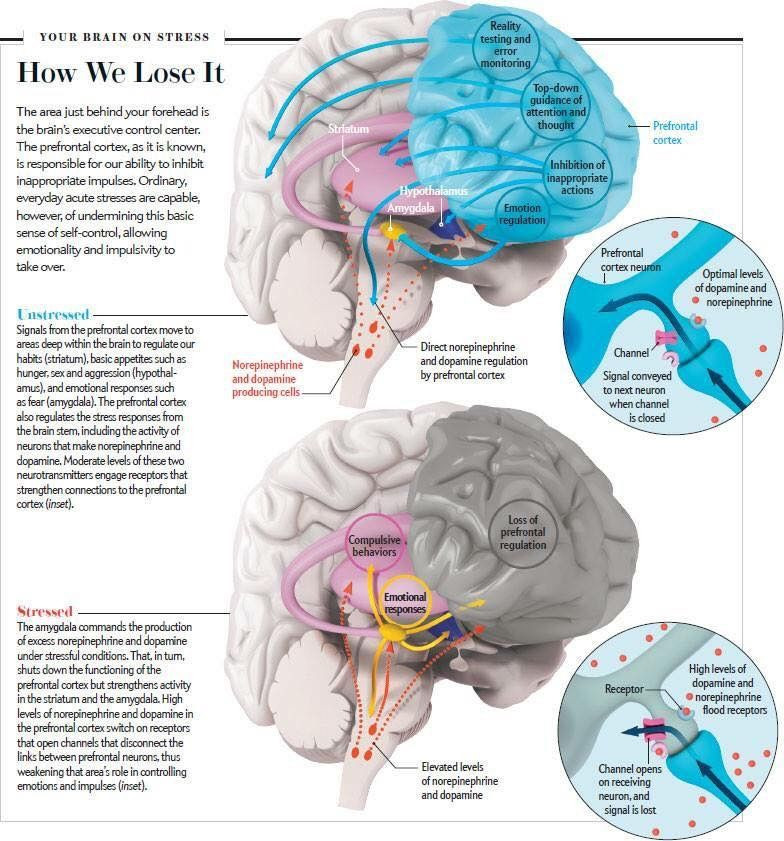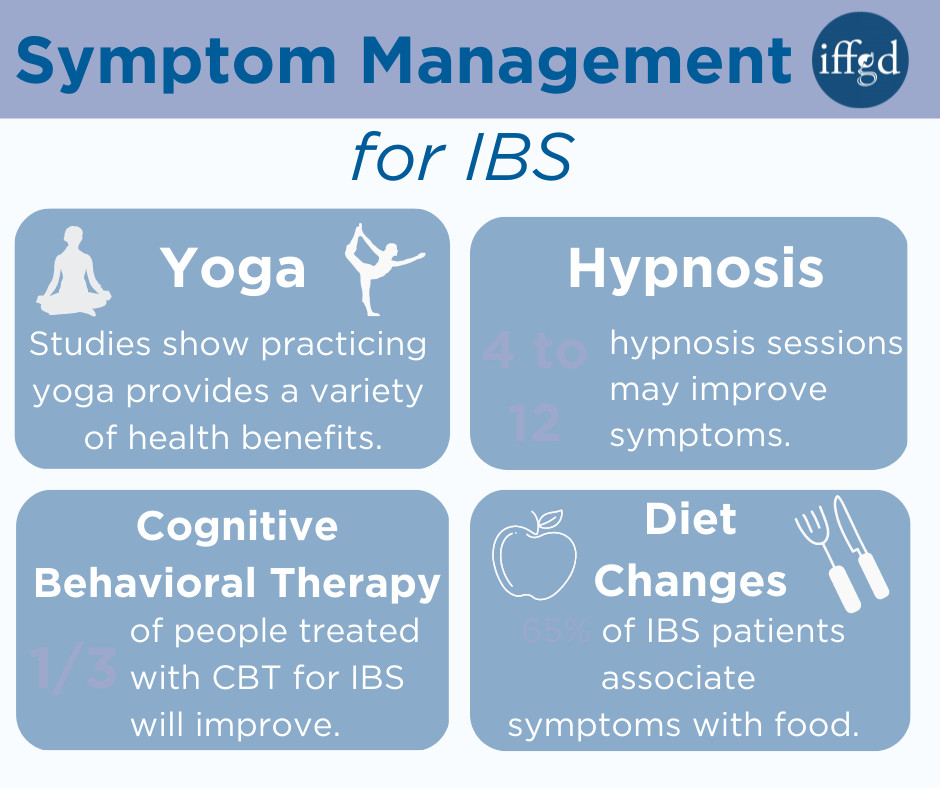
This blog post discusses how trauma can impact the brain and body. Research has shown that trauma can cause changes in key brain regions, including the hippocampus, amygdala, and prefrontal cortex, which can impact memory, emotion processing, and decision-making. Additionally, trauma can impact the stress response system, leading to a dysregulated stress response and increased sensitivity to stress. These effects can contribute to the development of mental health disorders such as PTSD and anxiety.
Read more...Menopause is a natural biological process that marks the end of a woman's reproductive years. While it is a normal transition, it can cause a range of symptoms, including hot flashes, mood swings, and sleep disturbances. Here are some evidence-based lifestyle changes that may help alleviate these symptoms:
- Exercise regularly: Exercise has been shown to reduce the severity and frequency of hot flashes and improve sleep quality in menopausal women. Aim for at least 30 minutes of moderate-intensity aerobic exercise most days of the week.
- Eat a balanced diet: A diet rich in fruits, vegetables, whole grains, and lean proteins can help manage menopausal symptoms. Avoiding caffeine, alcohol, and spicy foods may also help reduce hot flashes.
- Stay hydrated: Drinking plenty of water and other fluids can help manage hot flashes and prevent dehydration.
- Practice stress-reducing techniques: Meditation, yoga, deep breathing exercises, and other relaxation techniques can help reduce stress and improve sleep quality.
- Quit smoking: Smoking has been linked to increased hot flashes and other menopausal symptoms. Quitting smoking can improve overall health and reduce menopausal symptoms.
Remember, everyone experiences menopause differently, so it is important to discuss any symptoms with a healthcare provider to determine the best course of action for your life and lifestyle.
Read more...Many people from all walks of life are realizing the benefits of this embodiment practice
Read more...
IBS is common with prevalence estimated at 5% to 10% worldwide. Yet many people remain undiagnosed and unaware that their symptoms indicate a medically recognized disorder. If you are struggling with IBS, here are some evidence-based lifestyle changes that might help you manage your symptoms.
Read more...

Physical activity is anything that gets your body moving. Each week adults need 150 minutes of moderate-intensity physical activity and 2 days of muscle strengthening activity, according to the current Physical Activity Guidelines for Americans
Most of us know we need to exercise to maintain a healthy weight and cardiovascular fitness, yet we often struggle to stick with a plan. Physical activity is not only important for our health but has several other benefits.
- Improved Mood
- Sharpened Focus
- Better Sex Life
- Improved Sleep
- Decreased Stress
Many of us take our health for granted until we suffer the consequences of a sedentary lifestyle. Remembering the benefits of moving more can help to keep us motivated. Over time, a regular fitness routine can:
- Lower your risk of diseases like type 2 diabetes and some cancers
- Control your blood pressure
- Stay at a healthy weight
Want to learn more about important health benefits for adults? Check out the Move Your Way® Factsheet for Adults
It's not as difficult to meet current exercise recommendations as you may think. Everyday activities that get your body moving count as physical activity. Whatever gets you moving! Move your way. Even things that don’t feel like exercise count as physical activity, like walking your dog, dancing, swimming, and yard work and cleaning the house. Dancing is one of favorite ways to move my body and it doesn't feel like "exercise" because I am having so much fun and it does wonders for my mood! Kayaking is another favorite full-body physical activity that feels more like recreation than "exercise."
You can add more movement by taking the stairs, or parking farther away than you normally would. Just get your body moving more!
150 minutes per week - that's less than 2 hours of your time. There are 10, 080 minutes in a week, can you dedicate just 150 of them to insure your health and wellbeing for years to come?
Aerobic activity, also known as cardio, gets your heart beating faster and breathing harder. Activities like mowing the lawn, dancing, walking, biking all count as aerobic activity. As long as you do so with vigorous intensity, it counts towards meeting the recommended aerobic guidelines.
Moderate-intensity aerobic physical activity means you’re working hard enough to raise your heart rate and break a sweat. One way to tell if it’s a moderate-intensity aerobic activity is that you’ll be able to talk, but not sing the words to your favorite song. Here are some examples of activities that require moderate effort:
- Walking fast
- Doing water aerobics
- Riding a bike on level ground or with few hills
- Playing tennis
- Pushing a lawn mower
- Mopping the floor
Build Up Over Time
If you want to do more vigorous-level activities, slowly replace those that take moderate effort like brisk walking with more vigorous activities like jogging. Learn more about getting started with physical activity to improve health.
If you want to do more vigorous-level activities, slowly replace those that take moderate effort like brisk walking with more vigorous activities like jogging. Learn more about getting started with physical activity to improve health.
You can do moderate- or vigorous-intensity aerobic activity, or a mix of the two, each week. A rule of thumb is that 1 minute of vigorous-intensity activity is about the same as 2 minutes of moderate-intensity activity. Some people like to do vigorous activity because it gives them about the same health benefits in half the time. So, if your activity is vigorous, aim for 75 minutes per week.
If you haven’t been very active lately, however, increase your physical activity level slowly. If you have a history of a chronic disease, consider telling your doctor you are planning to increase your physical activity, including moving to more vigorous activity. You will want to feel comfortable doing moderate-intensity activities before you move on to more vigorous ones. Learn more about additional types of physical activity that might be right for you.
Want more tips on how you can add a variety of activities to your life? Check this out.
Physical activities to strengthen your muscles are recommended at least 2 days a week. Activities should work all the major muscle groups of your body—legs, hips, back, chest, abdomen, shoulders, and arms. Muscle-strengthening activities should be done in addition to your aerobic activity.
To gain health benefits, try to do muscle-strengthening activities to the point where it’s hard for you to do another repetition without help. A repetition is one complete movement of an activity, like lifting a weight or doing a sit-up. Try to do 8-12 repetitions per activity, which counts as 1 set. Try to do at least 1 set of muscle-strengthening activities. To gain even more benefits, do 2 or 3 sets.
You can do activities that strengthen your muscles on the same or different days that you do aerobic activity—whatever works best for you.
If strength training seems intimidating to you, there are many ways you can strengthen your muscles, whether it’s at home or the gym. Consider trying any of the following:
- Lifting weights
- Working with resistance bands
- Doing exercises that use your body weight for resistance (e.g., push-ups, sit-ups)
- Heavy gardening (e.g., digging, shoveling)
- Some forms of yoga
Need help designing your own movement routine? Book your discovery call today.
Would you like even more tips on how to incrementally improve your wellness?
Sign up for my next class; Prime -Time Health Sales Page, the first in a series of four interactive 90-minute sessions, each with education on wellness, tips for living a healthier life, recipes, worksheets and more.
Until next time!
Namaste
Angi




